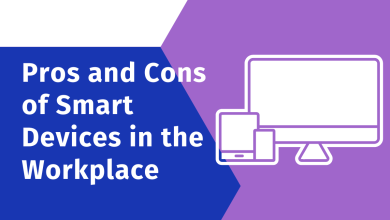How can Professionals & Organizations Thrive in the New Normal?

While people worldwide were ushering in the year 2020, the deadly coronavirus invited itself to the world and started making its presence felt. It began its undaunted march across the globe, causing havoc along its path. The first half of the year saw most of the world shut inside their houses, countries under lockdown. Offices, schools, universities, markets, etc., were all forced shut.
The year 2020 will be remembered in history as a year that saw humanity united together in fighting a common enemy. The human race is remarkably resilient. We believe in the saying, “When the winds of life are pushing you back, that’s when you push back the hardest.”
Our response to the survival issues created by COVID-19 was to bring in new norms of life, be it in social life, work or education. We are now in a constant process of experimenting, devising, and establishing new standards of not only how to live our lives and conduct our businesses but also how to thrive while doing so.
With the new reality of physical distancing, the corporate world is looking forward to settling in with the new norms of working safely yet effectively. The idea is that employees can work safely without hampering productivity.
Remote Working Model
With the world of working professionals in flux due to the pandemic, the work-from-home experiment that began when the lockdown was clamped down is now here to stay. It is now a new way of work-life.
For many industries like IT, EdTech, FinTech, etc., this has become the new model. In fact, remote working advocates have touted a new phrase, “work is something you do, not somewhere you go.”
Companies are looking at a scenario where approximately half of their workforce will be working from home in the foreseeable future and beyond. Employees of Twitter, Facebook, non-production staff of Peugeot and Citroen, etc., have been given the option of working from home in the future.
Research has shown that the remote working model is by and large quite successful and has proven to be potentially more productive with a happier workforce. Besides being flexible, working from home has also been cost-effective to employees (as commuting cost is zero) and organizations (organizations are moving to smaller office spaces, resulting in lower rental and utilities cost).
But this new way of working has presented its own challenges. Talent development and workplace learning have become challenging to achieve. Corporate working was all about teams working together. In the remote working model, this is just not fathomable.
On the personal front, some people are finding difficulty in coping with loneliness and isolation. For many, working remotely is blurring the line between personal and work life, thus resulting in the build-up of stress. Hence, organizations will need to monitor the efficacy and effect of their work-from-home model.

Below are a few pointers and best practices that both employees and organizations can follow to succeed in this remote working model.
For Employees-
- Set boundaries & a routine
It is essential to set boundaries and a routine to define the demarcation between personal and work time. It is vital to ‘switch off’ from work after a duration.
Similarly, just because you are working from home does not mean that you can be lazy and laidback towards your work.
Plan your tasks at the beginning of the day, make your availability known to your team, optimally manage your time.
- Create a dedicated work area
Create a work area that is noise and distraction-free, is clean and comfortable, is well-lit, etc. Invest in a headset that cuts out background noise; make sure that your workspace is well organized and has all you need for ease of working. Also, make sure you have a backup for power and network outage.
- Take a break
Just as a routine is essential, setting up break times is equally important. In an office environment, socialization happens during coffee breaks and lunch breaks; else, the entire day will be spent glued to the computer screen, which will negatively impact both mental and physical health. It is essential to take a few such breaks even while working from home. These breaks can be spent by ‘standing on the balcony while having your coffee,’ ‘taking a brief walk,’ ‘reading the newspaper,’ etc.
For Organizations –
- Virtual workspace accessibility
Organizations should facilitate the access of all the resources virtually. Employees should have easy access to documents and other resources that are required for seamless working. Digital collaboration tools should be made accessible and available to the employees to have a continuous and unhindered information flow.
Tools like Microsoft Teams, Cisco WebEx, Zoom, google doc comments, webinar platforms, etc., can result in better collaboration, new communication methods, and productive working ways. And as these new technologies and tools are being embraced, organizations should ensure that proper training and support are available to the employees; this will encourage them rather than stifle them to adopt these tools.
- Results-Based Tracking
The remote working model has to give rise to a new type of fluid leadership style that can adapt and cope with employees’ changing and varied needs. Since there is no way of monitoring what the employee is doing, the new leadership style needs to incorporate a greater degree of mutual trust. Managers should set new focus criteria of deliverables, reports, and learning where the employee does not require any supervision for their work.
- Encourage healthy communication & collaboration
Organizations should be cognitive to the employees’ needs as they try to navigate through the challenges that remote working throws at them. Listening to the feedbacks and problems faced by the employees is extremely important. There should be regular team meetings to ensure that teams are supporting each other. Organizational policies, procedures, and practices need to be adapted to suit the current scenario.
Organizations need to promote self-care among the employees to take care of their physical and mental well-being. Organizations should regularly reach out to employees to find out how they are doing and provide help to tide over their problems.

Building Capabilities via Training & Certification
Looking towards the future, organizations and individuals need to build capabilities to achieve their goals. Learning has become ever more critical. Building capabilities make the organization more robust, adaptable, and innovative. Now is not the time for both organizations and individuals to cut back on training. Given the uncertain times, the need of the hour is more learning so that we are ready to meet the demands of the future head-on.
Employees should look at training and certifications as a way of becoming future-ready. It is a fact that certifications and training help establish your credentials in the market and improve one’s skills.
In this time of uncertainty, individual self-esteem being at an all-time low, and when the corporate world is worried that remote working might hamper growth, certifications help immensely. The knowledge you gain after doing the training and certification results in your work being more productive and boosting self-esteem.
If you are a business analyst, for example, and are keen on upskilling and getting certified, certifications from IIBA are worth every penny spent. ECBA certification is a great one to acquire for freshers and junior BAs; for mid and senior BAs, CCBA and CBAP certification are excellent options.
As the world moves on, the corporate world is trying to re-establish its lost foot-hold. It is now looking beyond this nerve-racking, once-in-a-lifetime devastating, and life-changing event. Organizations across all industries are building up new mindsets and behaviors and are forging and establishing new policies towards remote working.
In this ‘new normal,’ as companies adapt to working remotely, virtual workspaces, results-based tracking, and asynchronous communication are taking center stage. Organizational culture, policies, procedures, and practices will need to synchronize with the new way of working. The new working policies will need to be thoroughly thought through and evaluated to benefit both the employee and the organization and help them thrive in this new normal.




